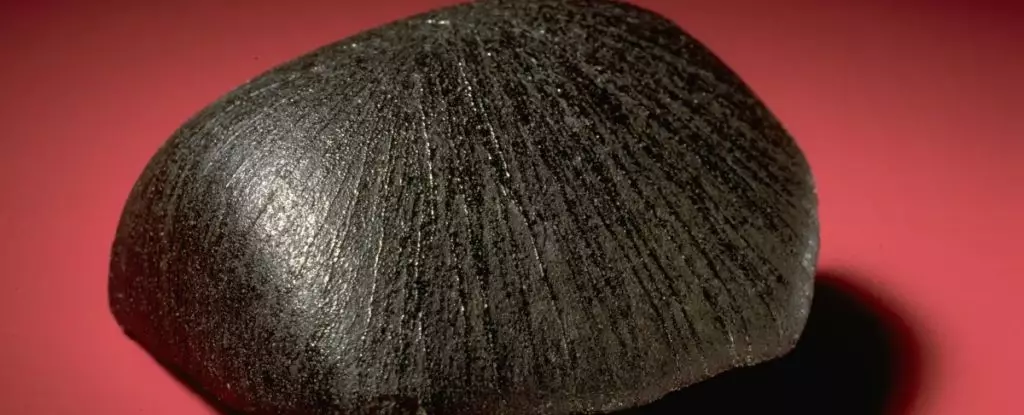The allure of Mars has captivated humanity for centuries, spurring endless curiosity about its environment and the possibility of past life. Emerging evidence suggests that this red planet was once a vibrant sphere drenched in water, its surface dotted with lakes and oceans. As scientists delve into this tantalizing history, new findings from the Lafayette Meteorite provide crucial clues about the presence and timeline of liquid water on Mars. Recent analyses indicate that Mars was not merely a frozen wasteland but might have been wet and dynamic much more recently than previously thought.
The Lafayette Meteorite, which originated from Mars approximately 11 million years ago, functions as a time capsule, transporting fragments of Martian history across space to Earth’s surface. Recent research focusing on this meteorite has yielded groundbreaking revelations regarding the existence of liquid water on Mars. By examining the minerals trapped within the meteorite, scientists have confirmed that they date back to at least 742 million years ago. This finding is remarkable, as it shows that conditions conducive to the presence of liquid water may have persisted for a significant portion of Mars’ geological history.
Geochemist Marissa Tremblay from Purdue University emphasizes the importance of this discovery, stating, “Dating these minerals can therefore tell us when there was liquid water at or near the surface of Mars in the planet’s geologic past.” The implications of this statement are profound, as they alter the narrative surrounding the habitability and climatic evolution of Mars.
The complexities of Mars’ wet past are further unraveled through the understanding of how and where liquid water might have been present. The analysis suggests that at the time these minerals formed, the water was likely not abundant on the Martian surface. Instead, it may have stemmed from melting permafrost—ice locked beneath the surface—triggered by volcanic activity. This revelation challenges the long-held assumption that Mars transitioned from a warm, wet environment to a cold, desolate one, suggesting that the planet’s geological activity continues to play a pivotal role in its hydrological history.
One mineral of particular interest is iddingsite, a product of volcanic basalt interacting with liquid water. The presence of iddingsite within Lafayette indicates that such interactions might have occurred intermittently, allowing researchers to piece together a more nuanced account of water’s presence on the planet.
The science of dating minerals, however, is fraught with challenges. Through advanced radiometric dating techniques relying on isotopes of argon, researchers have refined their ability to ascertain when liquid water interacted with Martian rocks. The process hinges on the decay of potassium, which generates argon. Importantly, this dating technique allows scientists to use the isotope argon-39 as a proxy for potassium content, leading to precise estimates regarding the timing of aqueous alterations.
Moreover, the journey the meteorite took—from ejection during a violent impact to its fiery descent through Earth’s atmosphere—presented unique challenges. Researchers adeptly modeled these environmental changes, concluding they had negligible effects on the dating accuracy of the identified minerals. Tremblay emphasizes the robustness of their method, demonstrating how it offers more profound insights not just for Mars but potentially for other planetary bodies.
The implications of this study reach far beyond the Martian landscape, contributing to the broader understanding of water’s presence across the Solar System. By establishing effective techniques to date alteration minerals in meteorites, scientists can extrapolate these findings to other celestial bodies and probe the longstanding question of how Earth acquired its water. The parallels and contrasts between Mars and Earth’s hydrological stories could illuminate the shared history of planetary formation in our solar neighborhood.
Recent revelations from the Mars InSight lander led to surprising conclusions about the planet’s internal activity, suggesting that Mars remains geologically active despite its current appearance. This renewed perspective urges researchers to re-evaluate assumptions about Mars’ climatic history and how it might have sustained conditions for liquid water.
The examination of the Lafayette Meteorite marks an evolutionary step in understanding Mars’ complex history. The ability to date minerals has provided a clearer timeline for the presence of liquid water, compelling us to reconsider the planet’s geological timeline and hydrological past. As we continue to deploy advanced techniques and explore other celestial bodies, we inch closer to unraveling the mysteries of not only Mars but of our own planet’s origins and evolution. The continued quest for knowledge promises to elucidate the fundamental questions of life and water throughout the Solar System, igniting the flame of curiosity that drives humankind to reach for the stars.

